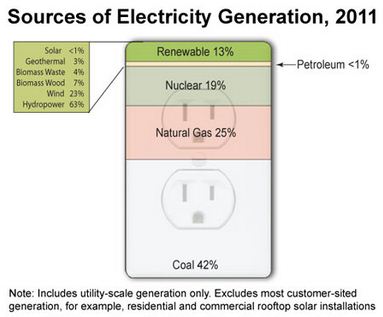Where Did The Hot Go?
SEARCH BLOG: GLOBAL WARMING
Last week I posted "How Are We To Measure Global Warming"? It was a brief litany of the various ways climate and temperature change could be measured and was meant to show the basis for disagreement when the "facts" seem so obvious.
Over at Climate Science, Dr. Roger Pielke, Sr. posted an examination of one of those areas: ocean heat content change as a measure of global climate change. The post was more technical than the average Al Gore YouTube video, but not so technical that even the slightly educated would be deterred from the obvious conclusion, to wit:
Thus, the best estimate value of 0.60 Watts per meter squared given in Hansen et al can be used, as a conservative value, to calculate the heat change in Joules that should be expected in the upper ocean data from 2003 to the present, as an update to results reported on Climate Science on June 5 2008.So, maybe instead of asking Where Did The Cold Go? we could be asking Where Did The Heat Go?
The observed best estimates of the observed heating and the Hansen et al prediction in Joules in the upper 700m of the ocean are given below:
OBSERVED BEST ESTIMATE OF ACCUMULATION Of JOULES [assuming a baseline of zero at the end of 2002].
2003 ~0 Joules 1/
2004 ~0 Joules
2005 ~0 Joules
2006 ~0 Joules
2007 ~0 Joules
2008 ~0 Joules
2009 ——
2010 ——
2011 ——
2012 ——
[my comment: that looks an awful lot like no change to me]
HANSEN PREDICTION OF The ACCUMULATION OF JOULES [ at a rate of 0.60 Watts per meter squared] assuming a baseline of zero at the end of 2002].
2003 ~0.98 * 10** 22 Joules
2004 ~1.96 * 10** 22 Joules
2005 ~2.94 * 10** 22 Joules
2006 ~3.92 * 10** 22 Joules
2007 ~4.90 * 10** 22 Joules
2008 ~5.88 * 10** 22 Joules
2009 ~6.86 * 10** 22 Joules
2010 ~7.84 * 10** 22 Joules
2011 ~8.82 * 10** 22 Joules
2012 ~9.80 * 10** 22 Joules
Thus, according to the GISS model predictions, there should be approximately 5.88 * 10**22 Joules more heat in the upper 700 meters of the global ocean at the end of 2008 than were present at the beginning of 2003.
For the observations to come into agreement with the GISS model prediction by the end of 2012, for example, there would have to be an accumulation 9.8 * 10** 22 Joules of heat over just the next four years. This requires a heating rate over the next 4 years into the upper 700 meters of the ocean of 2.45 * 10**22 Joules per year, which corresponds to a radiative imbalance of ~1.50 Watts per square meter.
This rate of heating would have to be about 2 1/2 times higher than the 0.60 Watts per meter squared that Jim Hansen reported for the period 1993 to 2003.
While the time period for this descrepancy with the GISS model is relatively short, the question should be asked as to the number of years required to reject this model as having global warming predictive skill, if this large difference between the observations and the GISS model persists.
1/joule (J)
- the SI unit of work or energy, defined to be the work done by a force of one newton acting to move an object through a distance of one meter in the direction in which the force is applied. Equivalently, since kinetic energy is one half the mass times the square of the velocity, one joule is the kinetic energy of a mass of two kilograms moving at a velocity of 1 m/s. This is the same as 107 ergs in the CGS system, or approximately 0.737 562 foot-pound in the traditional English system. In other energy units, one joule equals about 9.478 170 x 10-4 Btu, 0.238 846 (small) calories, or 2.777 778 x 10-4 watt hour. The joule is named for the British physicist James Prescott Joule (1818-1889), who demonstrated the equivalence of mechanical and thermal energy in a famous experiment in 1843. Although Joule pronounced his name "jowl", the unit is usually pronounced "jool" or "jew'l".
..






